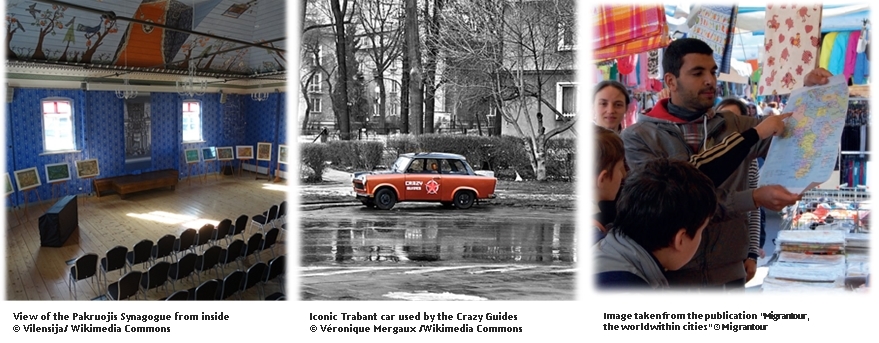Cultural tourism interventions ‘to interpret understand and disseminate’
Within the SmartCulTour Work Package 3, we proposed a taxonomy of cultural tourism interventions based on their ‘essential purpose’ (see here). One of the identified categories concerns interventions ‘to interpret understand and disseminate’. The urgency of interpreting and understanding cultural heritage clearly emerged from our data analysis, especially in association with contexts characterised by forgotten or neglected cultural heritage or heritage subject to contested or dissonant interpretations. Often, the presence of such dissonant heritage is determined by profound socio-economic and cultural changes a destination went through (e.g., the transition to a new socio-economic paradigm, conflicts, tragic events, socio-cultural or political tensions, etc.).
The analysis conducted within Work Package 3 included a large database of interventions and a selected number of case studies. Concerning this category of the taxonomy, the case studies focused on 3 specific interventions:
- The ‘crazy guides of Nowa Huta’: an entrepreneurial initiative to provide alternative tours in Nowa Huta, a district of Krakow (Poland) created during the Soviet Union as utopian socialist ideal city, a unique example of architecture and urban planning of that period. Disagreements among locals in the interpretation of this heritage determined a fracture in the society, between the part willing to silence the socialist heritage and the part willing to understand it better. The crazy guides of Nowa Huta approached the interpretation of this heritage with forms of ‘edutainment’ (combing education and entertainment), supported by appropriate storytelling skills and narrative techniques. They were able to provide a less divisive interpretation that contributed to healing fractures existing in the local community.
- Migrantour: now active in several European cities, the Migrantour network organises ‘Intercultural walks’ through neighbourhoods shaped and influenced by migrations. The walks are facilitated by ‘intercultural companions’, locals with a migration background. Migrantours provide new perspectives and interpretations of the historical and contemporary meanings of migrations for European cities, helping to understand how migrations and migrants contributed to their evolution.
- Pakruojis Synagogue: Pakruojis is a small town in the north of Lithuania, where the Jews settled in 1710, contributing to the local economy and social life of the town. Due to the tragic events of the past century, nowadays there is no Jewish community in the village anymore, making it difficult to maintain their cultural heritage and ensure its appropriate interpretation. The renovation of the old Pakruojis synagogue included the realisation of an exhibition about Pakruojis’ Jewish culture and history and the creation of a cultural centre available for the local community. Therefore, the Synagogue not only became an element of attraction for cultural tourists, but also a place of education, aggregation and cultural encounter.
The above-mentioned examples show that the ‘reason why’ of this type of intervention often relies on the usage of cultural tourism as a viable instrument to promote interpretations of forgotten/neglected heritage or heritage subject to unclear or dissonant interpretations. Our analysis revealed how the ability to listen to people, embracing an open-minded and bottom-up approach, together with communication and storytelling skills are often crucial resources to effectively implement such interventions. Besides the necessary financial means, also the support of scientific and academic knowledge (e.g., historians, sociologists or anthropologists) is often very important. These interventions generally lead to substantial positive impacts from a social (e.g., social cohesion, social inclusion of minorities, sense of community) and cultural (awareness & knowledge of cultural heritage, intercultural understanding, reconciliation of dissonant heritage interpretations) point of view. Furthermore, a moderate positive economic impact was also observed (jobs, incomes and business opportunities), although sometimes limited to a reduced number of (local) individuals or businesses. Several success factors also became evident from the analysis, namely the availability of financial resources, the ability to listen and let territories/people express and narrate themselves and the capacity to implement engaging forms of communication (for instance, through storytelling).


